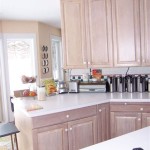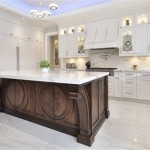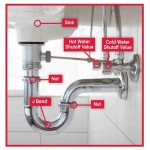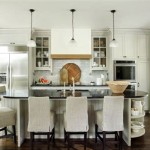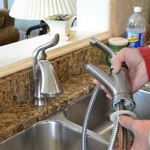How Much Does a New Kitchen Cost?
Undertaking a kitchen renovation is a significant investment for any homeowner. Determining the potential cost requires careful consideration of numerous factors, encompassing everything from the scope of the project to the materials selected. This article provides a comprehensive overview of the variables that influence the price of a new kitchen, offering insight into how to budget effectively and make informed decisions.
Factors Influencing Kitchen Renovation Costs
Several key elements contribute to the overall expense of a kitchen renovation. These factors interact in complex ways, and understanding each aspect is essential for accurate cost estimation. The primary drivers of kitchen renovation costs include the size of the kitchen, the extent of the remodel, the materials chosen, labor costs, and unexpected expenses.
The size of the kitchen directly impacts the amount of material required. Larger kitchens necessitate more cabinets, countertops, flooring, and paint, resulting in higher material costs. Furthermore, larger spaces may require more extensive plumbing and electrical work, adding to the overall expense.
The extent of the remodel also significantly influences the cost. A minor cosmetic update, such as painting cabinets and replacing hardware, will be less expensive than a complete kitchen overhaul that involves relocating plumbing, electrical wiring, and walls. A full gut renovation, which involves removing everything down to the bare studs, will naturally be the most costly option.
Material selection plays a crucial role in determining the final price. Choices ranging from budget-friendly laminate countertops and stock cabinetry to high-end granite countertops and custom-built cabinets can dramatically alter the budget. Similarly, flooring options such as vinyl, tile, hardwood, and natural stone carry varying price points. Appliances also contribute significantly, with professional-grade models costing considerably more than standard appliances.
Labor costs vary depending on the location and the complexity of the project. Hiring experienced and licensed contractors will typically command higher rates compared to less experienced or unlicensed individuals. However, investing in qualified professionals can help ensure the job is done correctly and safely, potentially saving money in the long run by avoiding costly mistakes and future repairs. The number of tradespeople required, including plumbers, electricians, carpenters, and installers, will also impact the labor costs.
Unexpected expenses are a common occurrence during kitchen renovations. These can include unforeseen structural issues, such as hidden water damage or outdated wiring, as well as changes in design preferences during the remodel. Setting aside a contingency fund, typically 10% to 20% of the total budget, is a prudent strategy for addressing these unforeseen costs without derailing the project.
Breaking Down Kitchen Renovation Costs
To gain a clearer understanding of where the renovation budget is allocated, it is helpful to break down the costs by category. While the specific percentages may vary depending on the project's scope and selections, this provides a general overview of cost distribution.
Cabinets: Cabinets typically represent the largest expense in a kitchen renovation, accounting for approximately 30% to 40% of the total budget. The cost of cabinets varies depending on the type, material, and construction. Stock cabinets are pre-built and readily available, offering the most affordable option. Semi-custom cabinets offer more flexibility in terms of styles and sizes, while custom cabinets are built to order, allowing for maximum design freedom but also incurring the highest expense. Cabinet hardware, such as knobs and pulls, also contributes to the overall cost.
Appliances: Appliances usually account for 15% to 20% of the budget. This includes the refrigerator, oven, stove, dishwasher, and microwave. The price of appliances can vary significantly depending on the brand, features, and energy efficiency. Consider the long-term cost savings of energy-efficient appliances, which can offset the initial investment through reduced utility bills.
Countertops: Countertops typically account for 10% to 15% of the budget. Options range from laminate, which is the most affordable, to solid surface, granite, quartz, and marble, which are more expensive. The material chosen should consider both aesthetics and durability. Installation costs are also a factor, as some materials require specialized tools and expertise.
Labor: Labor costs typically represent 15% to 20% of the budget. This includes the fees paid to contractors, plumbers, electricians, carpenters, and installers. Obtaining multiple quotes from qualified professionals is recommended to ensure competitive pricing. Verify that contractors are licensed and insured to protect against liability in case of accidents or damages.
Flooring: Flooring typically accounts for 5% to 10% of the budget. Options include vinyl, tile, hardwood, and laminate. Consider the durability, maintenance requirements, and aesthetic appeal of each material. Installation costs vary depending on the complexity of the project and the type of flooring chosen.
Plumbing and Electrical: Plumbing and electrical work typically account for 5% to 10% of the budget. This includes the cost of installing new pipes, wiring, outlets, and fixtures. If the kitchen layout is being significantly altered, necessitating the relocation of plumbing or electrical lines, these costs will increase. Hiring licensed professionals is essential to ensure compliance with building codes and safety regulations.
Lighting: Lighting typically accounts for 5% of the budget. This includes the cost of installing new light fixtures, such as recessed lighting, pendant lights, and under-cabinet lighting. Consider both task lighting for food preparation and ambient lighting for creating a comfortable atmosphere. Energy-efficient LED lighting can help reduce energy consumption and lower utility bills.
Backsplash: Backsplashes typically account for 3% of the budget. Backsplashes can range from simple tile to more elaborate designs with glass, stone, or metal. The backsplash protects the wall from splashes and spills and adds a decorative element to the kitchen.
Other Costs: This category includes miscellaneous expenses such as permits, demolition, painting, hardware, and accessories. Permits are required for certain types of renovation work and can vary in cost depending on the location. Demolition involves the removal of existing cabinets, countertops, and flooring. Painting is essential for freshening up the walls and ceiling. Hardware includes knobs, pulls, and hinges. Accessories include items such as dish racks, organizers, and decorative items.
Budgeting Strategies for Kitchen Renovations
Effective budgeting requires a clear understanding of available resources, realistic expectations, and careful planning. By implementing strategic approaches, homeowners can manage costs and achieve the desired results without overspending.
Define the Scope of the Project: The first step in budgeting is to clearly define the scope of the project. Determine what aspects of the kitchen need to be renovated and what can be left untouched. Prioritize needs versus wants. For example, replacing outdated appliances may be a necessity, while adding a wine refrigerator may be a luxury that can be deferred if budget constraints exist.
Set a Realistic Budget: Research typical kitchen renovation costs in the local area to establish a realistic budget. Online resources, such as cost estimator tools and industry publications, can provide valuable insights. Consider the size of the kitchen, the desired materials, and the complexity of the project. Factor in a contingency fund for unexpected expenses.
Obtain Multiple Quotes: Obtain quotes from multiple contractors, suppliers, and tradespeople. Compare the quotes carefully, paying attention to the scope of work, materials included, and warranty information. Do not necessarily choose the lowest bid, as it may reflect lower quality materials or less experienced labor. Check references and review online reviews before hiring any professionals.
Consider DIY Options: If comfortable with home improvement tasks, consider performing some of the work independently to save on labor costs. Tasks such as painting, demolition, and installing simple hardware can often be done without professional assistance. However, for complex tasks such as plumbing and electrical work, it is essential to hire licensed professionals to ensure safety and compliance with building codes.
Prioritize Material Selections: Carefully consider the material selections, balancing aesthetics with budget constraints. Explore cost-effective alternatives that offer similar functionality and appearance. For example, laminate countertops can mimic the look of granite at a fraction of the cost. Similarly, stock cabinets can be customized with new hardware and paint to achieve a more upscale look.
Phase the Project: If budget constraints are significant, consider phasing the project over time. For example, replace the cabinets and countertops first, and then address the flooring and appliances at a later date. This allows for spreading out the costs and managing the budget more effectively.
Explore Financing Options: If necessary, explore financing options such as home equity loans, personal loans, or credit cards. Compare interest rates and repayment terms carefully before making a decision. Consider the long-term cost of financing and whether it is a viable option based on financial situation.
Track Expenses: Meticulously track all expenses throughout the renovation process. Use a spreadsheet or budgeting app to monitor spending and ensure adherence to the budget. Regularly review the budget and adjust as needed based on actual costs incurred.
By understanding the factors that influence kitchen renovation costs and implementing effective budgeting strategies, homeowners can approach the project with confidence and achieve a beautiful and functional kitchen within their financial means.

How Much Does A New Kitchen Cost Bathroom Ideas

New Kitchen Guide 2024 How Much Does A Cost

What Is The Average Cost To Remodel A Kitchen

How Much Does A New Kitchen Cost 2024 Buildmat

Kitchen Fitting Cost Guide 2024 How Much To Fit A

What Does An Average Kitchen Cost Superior Cabinets

Kitchen Installation Cost 2024 Data

Kitchen Renovation Cost In 2024 Checkatrade

The Average Of A New Kitchen Installation

Kitchen Fitting Cost Guide 2024 How Much To Fit A
Related Posts

